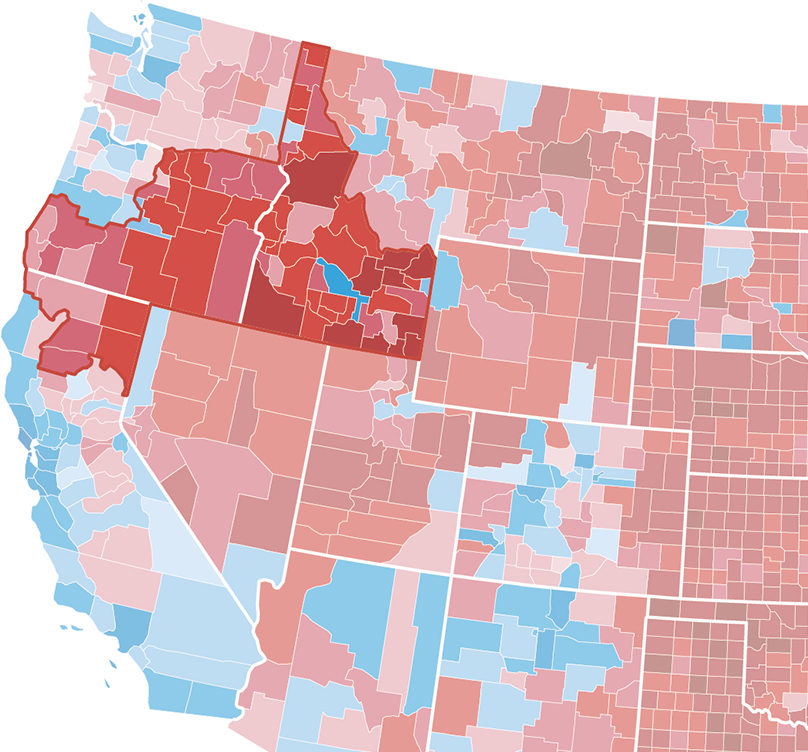162 years ago—President James Buchanan was president, the Civil War had not commenced, and Oregon recently was granted statehood—the Oregon/Idaho border was drawn. Over a century and a half later, the same lines drawn by politicians in remote East Coast offices remain. Oregonians are now raising their pencils (and flags) in a momentous effort to redraw the Oregon border.
Tired of living in a predominantly blue state, eastern Oregonians are creating legislation to join Idaho. This is driven by primarily agricultural communities desiring to maintain their rural values. The predominantly Republican counties are tired of being held captive in the blue state.
The movement, spearheaded by “Move Oregon’s Border for a Greater Idaho,” is gaining traction. Two counties voted in favor of the idea in November 2020, and five additional counties joined them in a May 2021 vote.
“This election proves that rural Oregon wants out of Oregon,” said Mike McCarter, president of Move Oregon’s Border. “Oregon is a powder keg because counties that belong in a red state like Idaho are ruled by Portlanders…. Divisions in Oregon are getting dangerous, so we see the relocation of the border as a way to keep the peace. It’s not divisive.” He calls the movement “a peaceful revolution.”
The signature-gathering effort “to gain political refuge from blue states” was hampered last year due to the coronavirus pandemic, but it’s now picking up some momentum. At the time this issue went to press, eight counties were still collecting petitions seeking a vote, and several prominent elected officials in Idaho, including Governor Brad Little, have expressed support for the movement.
But regardless of this momentum, moving Oregon counties into Idaho remains a long shot. No matter how many Oregon counties say they want to be part of Idaho, the two state legislatures — and ultimately the U.S. Congress — would have to give their approval.
Historically, borderline adjustments are not unprecedented. The most famous instance of states altering borders occurred in 1998 when the U.S. Supreme Court established that much of Ellis Island belonged to New Jersey, although the “tourist-y” part remained in New York State. The Oregon/Washington border was updated in 1958. The Oregon/Idaho border was not. West Virginia was admitted to the Union in June 1863, and the Virginia/West Virigina border was changed twice thereafter (Berkeley and Jefferson counties). However, a border adjustment of this magnitude would be a new feat.
Whether the legislation is voted in or the borders remain, the movement embodies the growing unrest stimulated by cultural and political polarization in America.


